
No film is ever “harmless”. Each one plants a seed, an emotion, a dream, some “otherness” in the mind of the spectator. However, there are periods and places that resemble a powder keg; in those circumstances, a film can easily assume the role of the spark.
Cinema is often considered the synthesis of all the other arts and it certainly condenses their respective impact; it is also largely recognized that the language of images is the most accessible of all forms of communication.
Therefore, it is not surprising that the idea of banning or censoring films almost coincided with the birth of cinema. If nowadays one associates the muzzling of arts with totalitarian regimes, it used to be an established practice around the world.
The following ten films prove that, quite often, it was not the citizens’ integrity or public decency that was at stake, but other undisclosable reasons.
1. Haxan (1921) – dir. Benjamin Christensen
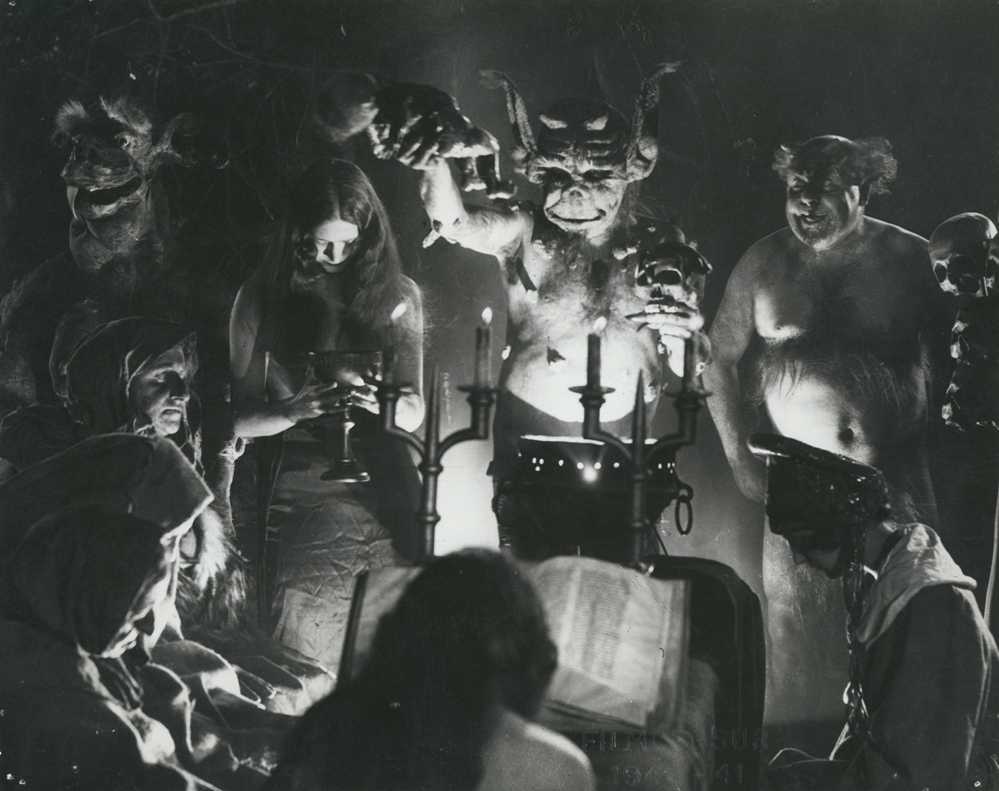
Benjamin Christensen’s “Haxan” is one of the first of the numerous films that were banned on religious grounds (the most notorious of them being on this list). In the twenties, organized religion still had an iron grip on the deciding structures of society.
At that same time, cinema had emerged from the first world conflagration shrouded in an aura of prestige given by its participation to the war effort as a propaganda tool. Yet, if its efficiency was demonstrated, its artistry was still disputed by many.
The First World War had also signed the demise of France and Italy as leaders of the international cinematic market. Despite the general decay of the European film industry, the Nordic countries continued to be a fertile territory for artistic experimentation.
The splendid landscapes of the region were used arguably with more mastery than the American open spaces in westerns. This prowess was combined with the German experience of interiors; the Kammerspiel (chamber drama) genre had polished light schemes and blocking to near perfection.
“Haxan” was the direct result of these influences, but it also displayed remarkable originality in its use of visuals. For the viewers of the time, its shock value consisted of having animated with disquieting vividness otherwise static images of witchcraft and inquisition (like sketches, paintings or engravings) that were part of the collective imagination.
Of course, its (rather tame, judging by the current standards) depiction of the debaucheries and perversions commonly associated with the practice of black magic, as well as the forceful denouncement of the treatment administered to the “possessed” did not find a favorable echo with conservative circles.
2. Battleship Potemkin (1925) – dir. Sergei Eisenstein
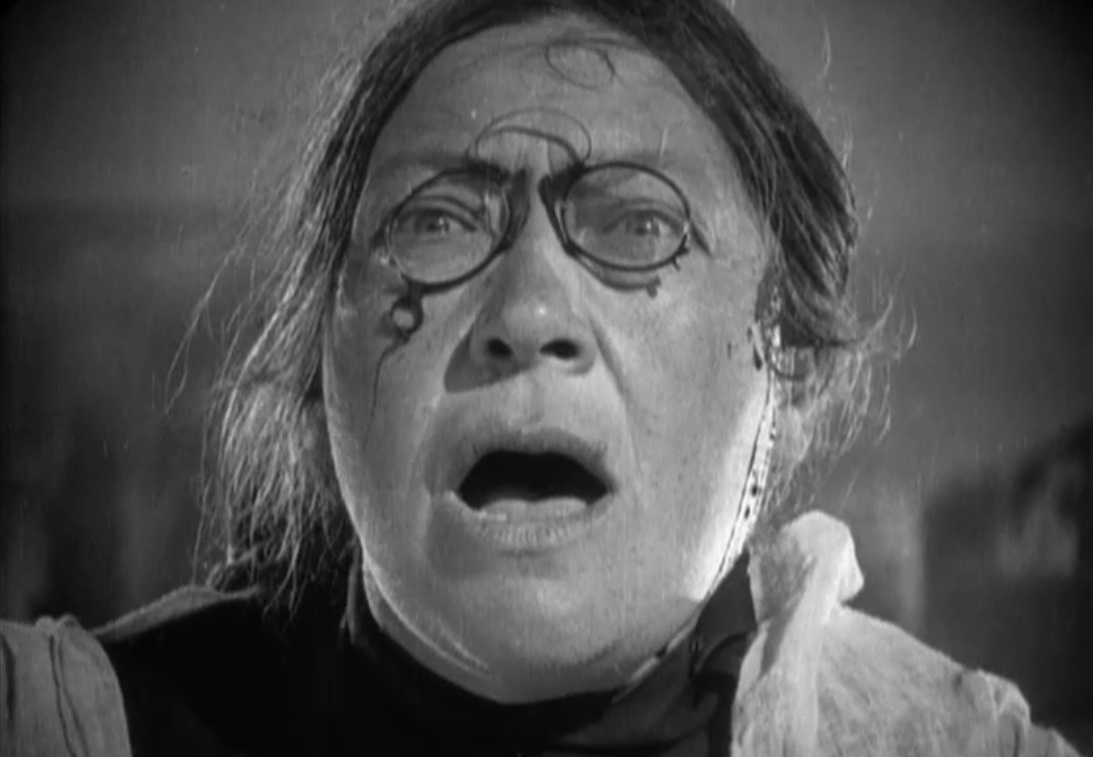
Not only did “Battleship Potemkin” bring to its pinnacle Eisenstein’s notion of montage as the essence of cinema and as its differentiator from the other visual and performing arts, but it also proved to be an impressive propaganda piece, which was banned in various Western states out of fear that it could initiate social unrest.
Eisenstein proved that he could put into practice his theory concerning the symbiosis between a new form of human organization (in this case, the communist model) and an innovative artistic language, the second being supposed to reinforce and translate for the population at large the ideological concepts of the first. In return, the newly-established order would furnish stories of deconstruction and later, of reconstruction.
The narrative of “Battleship Potemkin” contains both the collapse of the old world and the (short-lived) promise of the new one. Despite ending ambiguously, on a gesture of solidarity form the military to the rebels that is hopeful as much as it is pointless, it persuasively argues that minor incidents are the foundation for all-encompassing revolution.
Nowadays, the banning imposed on Eisenstein’s film only indicates the inability of the Western sphere to defend its values by other means than by shutting out discordant influences; furthermore, it is a historical testament to the power of persuasion of communism, before it had spawned the monsters that ruined its appeal.
3. Paths of Glory (1957) – dir. Stanley Kubrick
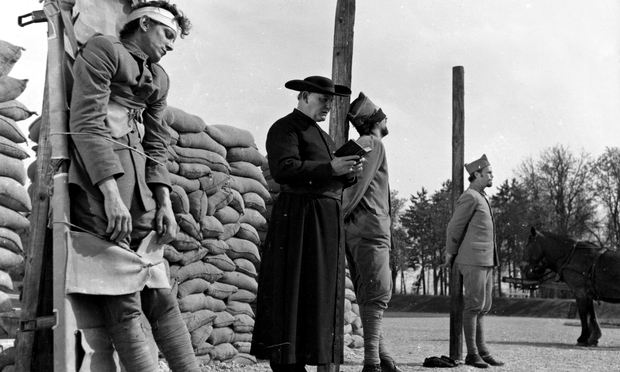
Stanley Kubrick’s previous film before “Paths of Glory” was called “The Killing”. This would have been a perfectly appropriate title for the story of the wrongful execution of three French soldiers in the midst of World War One, chosen by their superiors to serve as an example for the rest of the troops who were starting to doubt the fact that the kind of war they were engaged in could ever have a plausible justification.
If “The Killing” would have been a title as incisive as a scalpel, “Paths of Glory” bursts with cruel irony and indicates from the start that it is not the traditional enemy that will cause the atrocities to be depicted in the story, but human vanity and incommensurable egotism.
For once, the United States could take pride in the fact that they had sentenced to death twenty-four soldiers for cowardice during World War One, but none of the executions were carried out; this contrasted with the practice found in many armies of the Old Continent, which involved pitilessly punishing “rebellious elements”. Kubrick’s indictment was irrefutable and altogether more dangerous.
Therefore, France banned the film (the interdiction was eventually lifted in 1975), so did American military bases located in Europe, and the Berlin Film Festival cancelled its showing in order not to strain diplomatic relationships with Germany’s western neighbor.
The film is now considered a classic and an appropriate introduction to Kubrick’s oeuvre.
4. Victim (1961) – dir. Basil Dearden
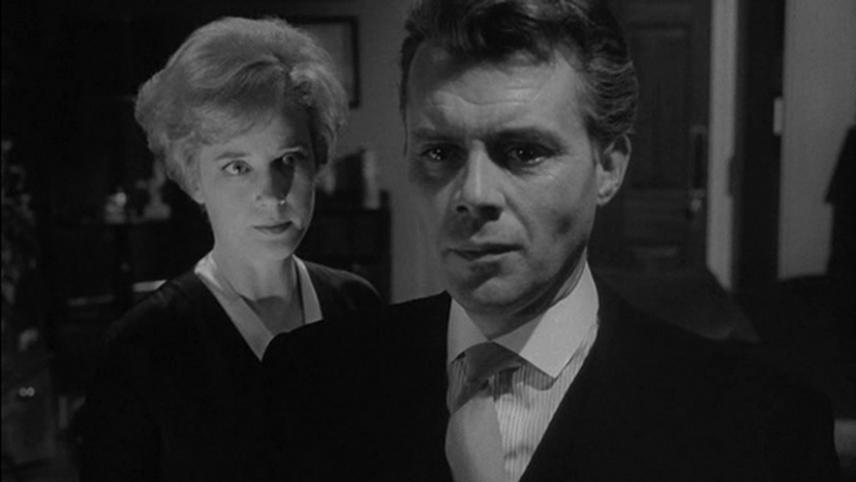
The existence of many cinematic masterpieces is often intricately connected to dark periods in history, and even when a particular part of the world goes through more clement times, the art that is produced there often willingly turns back to face the somber past.
Basil Dearden’s “Victim” is not such a masterpiece, but it does indeed find its raison d’être in the condemnation of the Criminal Law Amendment Act 1885, which stated that any homosexual activity between males, be they consensual or not, was illegal.
Generally, for a film to be considered militant it is expected that it defends its cause virulently; “Victim” is all but vindictive, yet it pleads its case in small brush strokes, without panache but with quiet obstinacy. It is hard to assess its effectiveness from a contemporary perspective.
It was certainly startlingly bold in its approach, but it is so lusterless in its form, it reminds one so much of a Hitchcock film from his British period, but without the master of suspense’s delightful irony, that one can wonder if it could ever have had any kind of impact.
It is the initial X-rating applied by the British Board of Film Censors and the refusal of a seal of approval from the American Motion Picture Production Code that are the only remaining evidence of the once- revolutionary nature of “Victim”.
5. I am Curious (Yellow) (1967) – dir. Vilgot Sjöman
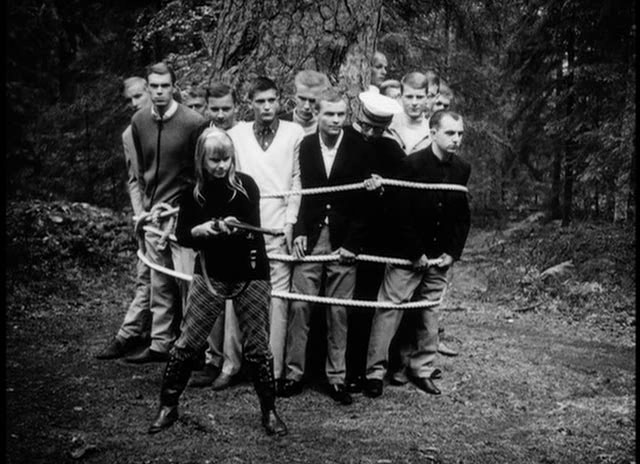
Vilgot Sjöman’s “I am Curious (Yellow)” is the first part of a cinematic diptych that aimed to portray Swedish society in a time of unprecedented transformation, namely the sixties, and it does that and more with remarkable finesse, but only in the moments when it lets its guard down.
Despite Sjöman’s assertions regarding the spontaneity of the shooting, which was conducted with not much prior rumination, the film frequently seems contrived, battling to affirm its worth and its allegiance to the cinematic vanguard that was sweeping the world during those years.
It adopts the talking heads and the street inquiry documentary format which had been often used since the advent of cinema-vérité and conscientiously unfolds its meta-narrative in ways that automatically bring to mind Bergman and Fellini.
These parts are therefore not entirely successful, but the interviews unintentionally mimic a certain obtuseness, a certain reluctance to hear contrary arguments that are highly representative of that period of sometimes blind political engagements.
On the positive side, they also highlight the protagonist Lena’s desire to soak in all kind of experiences, civic, artistic, emotional and sexual, which she does with an almost childish availability.
It is of course the sexual aspects that shook the United States, where the film was seized for being “pornographic” and was finally released to overwhelming popular acclaim after a decision of the Supreme Court.